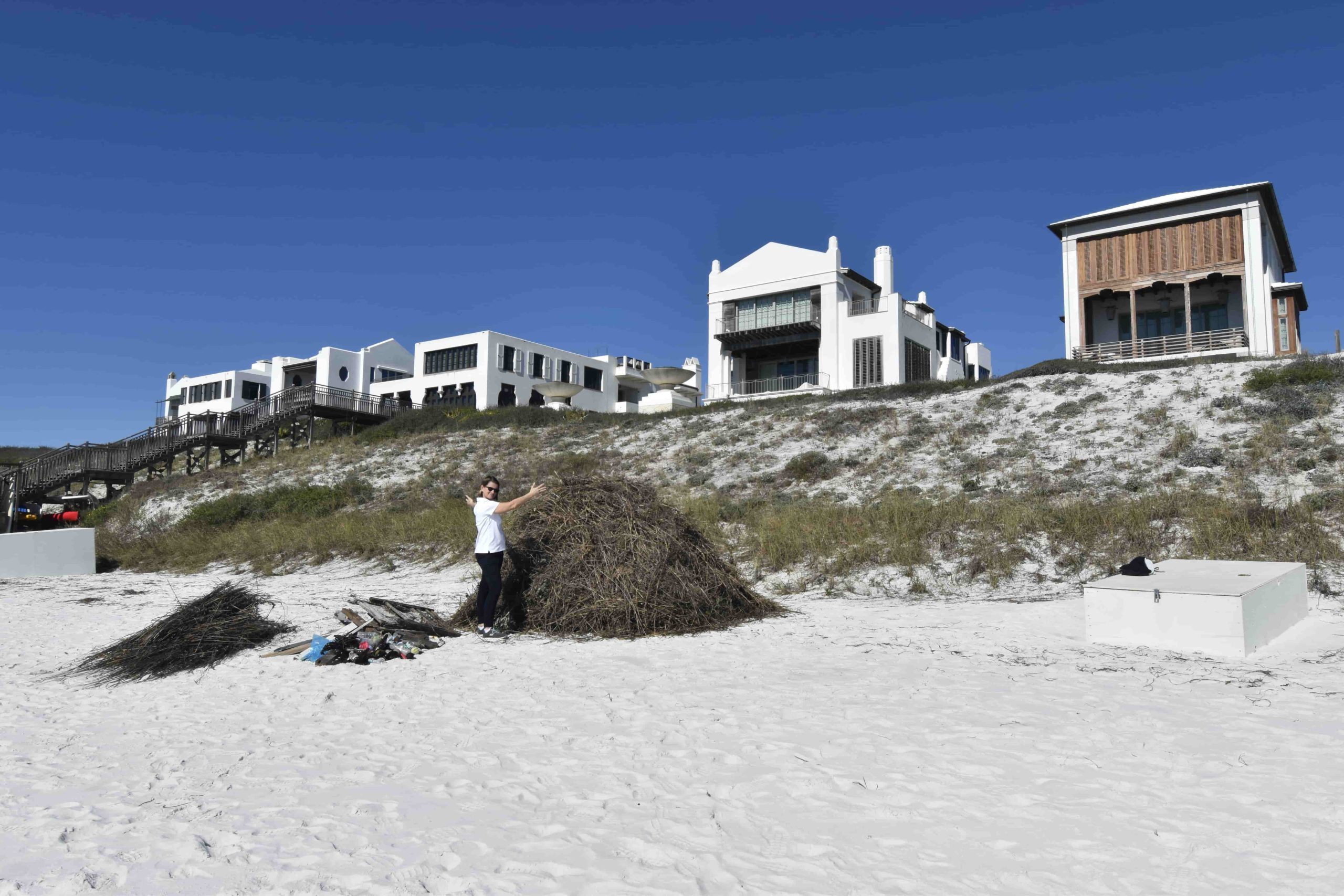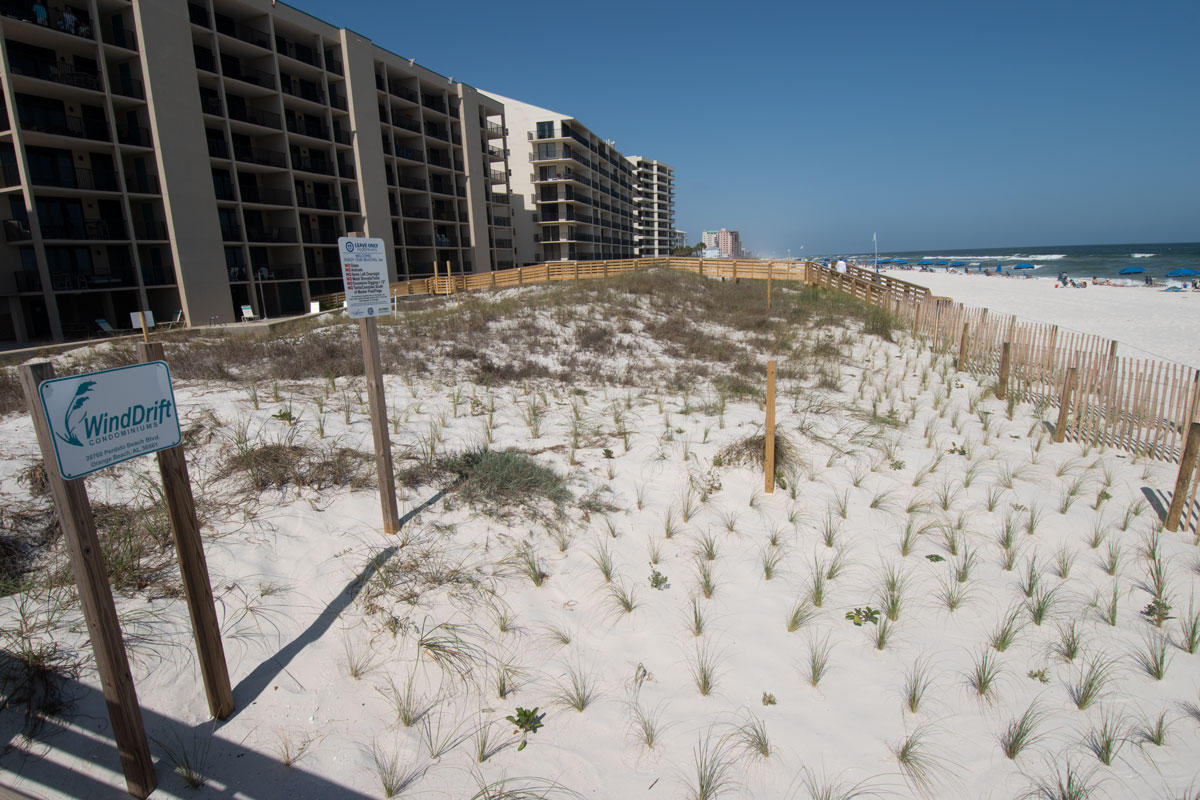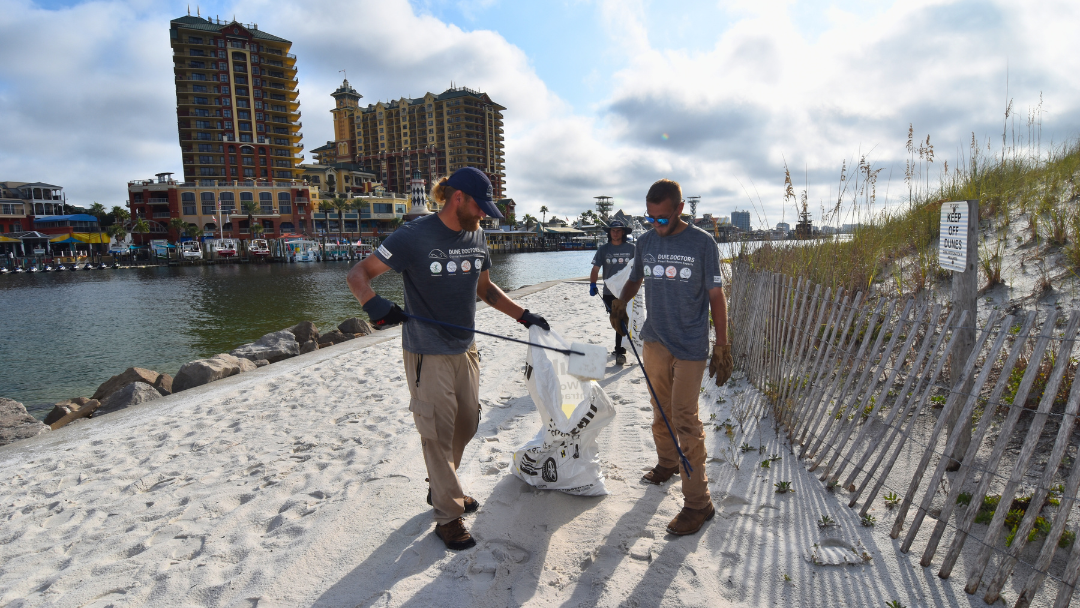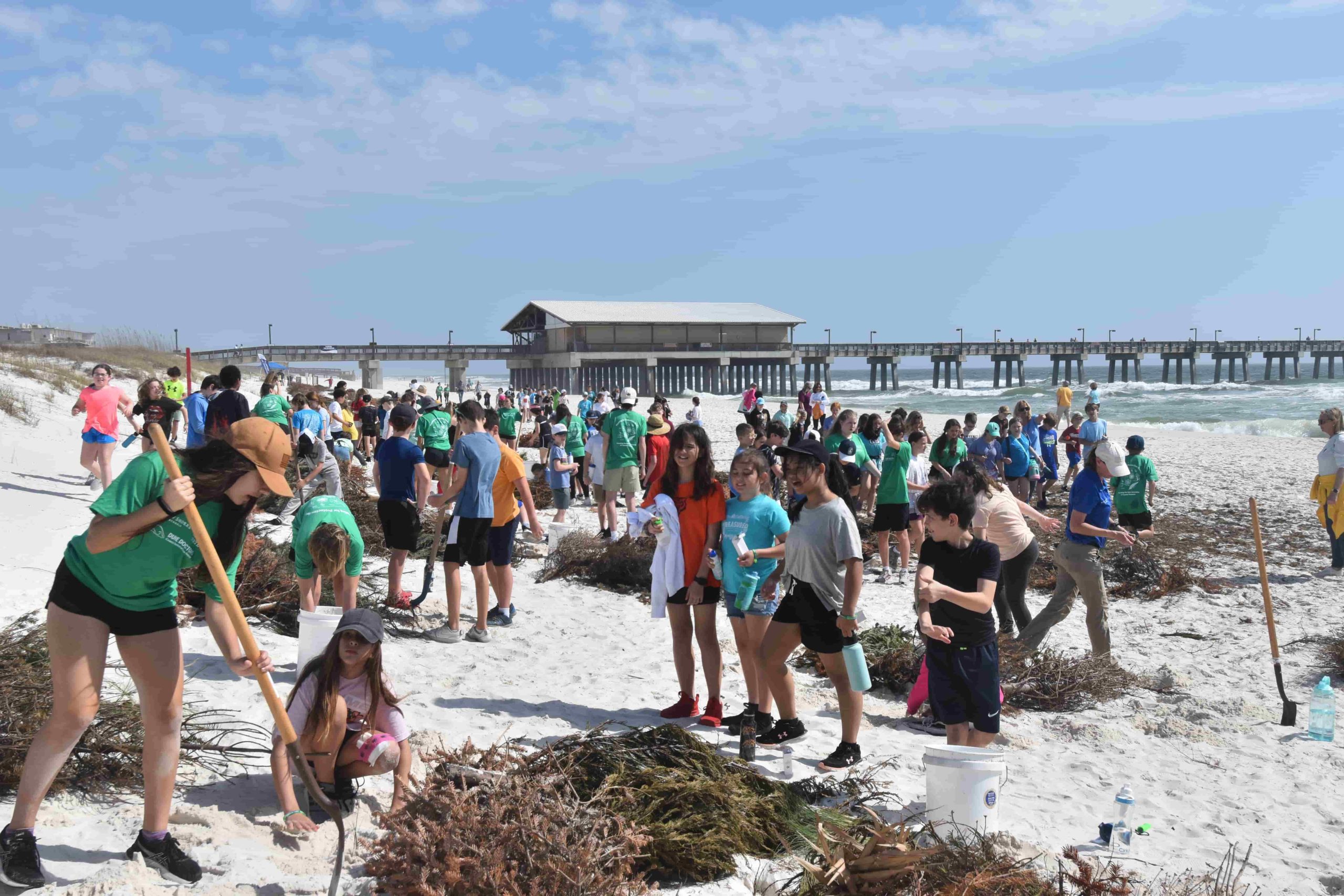Before summer storms reach their full force, the native vegetation growing on your dune have exited their dormant season and is actively colonizing and anchoring your dune in place. The growing season for most dune-stabilizing plants begins in late spring and extends through hurricane season, a seemingly strategic pattern set in motion by Mother Nature. In order to help you maximize this year’s growing season and be prepared for potential storm action, we put together 7 steps that can be implemented in most counties during the summer months.
1. Dune Assessment
The first step is to assess your existing dune’s health. By understanding your dune’s strengths and having at-risk areas diagnosed, you will set the foundation for your property’s roadmap to coastal resiliency. A dune assessment will determine what steps need taken in order to stabilize and strengthen your natural barrier against storm surge. To obtain a dune assessment, you can reach our team of coastal erosion control experts at (866) 386-3737. To view our dune diagnosis sheet and familiarize yourself with identifying potential risk factors on your property, click here.
2. Dethatch and Pruning
Dethatching is the process of removing dead organic plant material that has accumulated at the base of your native vegetation. This removal is critical because thatch concentrates moisture along the surface of the dune, resulting in root rot and shallow root systems. These plants can easily be uprooted by wave action. Dead flower stalk pruning allows plants to redirect their energy from sustaining nonessential growth to root expansion, further stabilizing the dune.

3. Debris Removal
Every now and then, a storm will deposit an unpredictable variety of debris, such as metal beach chairs, rubber tires, plastic bags, buckets, and glass bottles on the beach. While these items do accrete sand, storm action can easily pick up the unanchored debris and move it landward towards your property.
4. Invasive Species Removal
By blocking sunlight and stealing nutrients and moisture from native plants, invasive species can rapidly destabilize a dune’s integrity. Invasive vines choke out the native grasses. Do not use a weedwhacker to kill the invasive plants because this will cause their seed pods to burst and further the species’ colonization of the coast. Instead, employ professional help to carefully extract these aggressive threats from your dune.
5. Fertilization
Grasses are the primary dune-stabilizing plants along the coast. To make the most out of their growing period, we recommend two applications of dune-specific, slow-release fertilizer at the end of spring and during summer.
6. Installation of New Plants
Bare areas on your dune are at risk of eroding faster than sections anchored by existing vegetation. Install new plants to stabilize the entirety of your dune.

7. Storm Recovery Plan
Having a Storm Recovery Plan ensures that you are prepared to build a new protective berm and replace damaged boardwalks after a storm. Call us today to discuss a personalized Storm Recovery Plan for your protective dune ecosystem.






